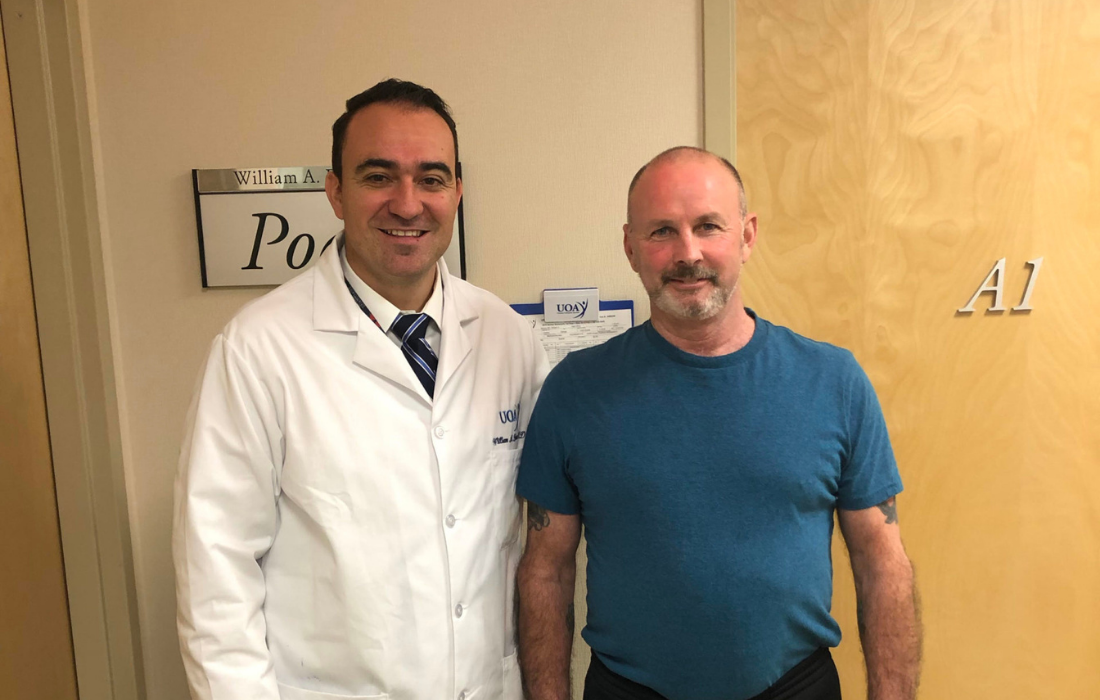Osteoarthritis (OA), the most common joint disorder in the United States, impacts an average of 25 million people in this country. Like other forms of arthritis, the cartilage between the bones wears away in the joints. There is no cure for osteoarthritis but there are treatment options. It is believed to be related to aging but can also occur if the disease runs in the family, if a patient is overweight, or due to long-term uses of a joint. Bony spurs or growths typically form around the joint, and the ligaments and muscles can loosen and become weak.
Symptoms of Osteoarthritis
Common symptoms of OA include:
- Deep aching joint pain that gets worse after exercise and is relieved by rest
- Pain that is worse when you start activities after a period of no activity
- Over time, pain is present even when you are at rest
- Grating of the joint with motion
- Increase in pain during humid or moist weather
- Joint swelling
- Limited movement
- Muscle weakness around arthritic joint
Treatment Options
There are several ways to address OA depending on the extent of pain, disability and the impact on function.
Non-pharmacological treatments of OA include exercise, weight loss, bracing, shoe and insole modification, localized cold/heat, acupuncture and a well-guided physical therapy program. In addition, various substances, such as corticosteroids, viscosupplements and blood-derived products may be administered through intra-articular injection (joint injection) to increase joint viscoelasticity and to improve pain management.
Pharmacologically, medications can be prescribed to help with inflammation, pain and to alter progression of the osteoarthritic process.
Advanced cases may benefit from surgical intervention including minimally invasive, outpatient procedures and for severe cases, joint replacement surgery.
Corticosteroids
Corticosteroids help to reduce joint inflammation and are a quick but short-acting treatment for OA. For some individuals, corticosteroids are the right treatment to relieve an immediate OA flare-up. Corticosteroids can be overused, and in that case, can contribute to loss of joint cartilage. It is recommended that patients should not receive more than three corticosteroid injections in a single joint in a calendar year.
Viscosupplementation
Viscosupplementation involves the injection of a gel-like medication into the joint to help lubricate the joint, facilitate motion and relieve pain. Viscosupplementation may offer a “fix” for some patients after a single injection, while others may benefit from periodic injections over time.
Blood-Derived Treatments
There has been a good deal of recent publicity over the use of blood-based treatments like platelet rich plasma (PRP) or stem cells for the treatment OA. Use of PRP or stem cells involves a blood draw of one’s own blood, and then a processing to bolster the content of the blood that is re-injected into the OA joint. Use of blood-based products is expensive, often not reimbursed by insurance, and has not been shown to be dramatically more effective than viscosupplementation.
Ultrasound-Guided Injections
While it isn’t always necessary, diagnostic ultrasound is frequently utilized by physicians who wish to ensure the correct placement of injectable medication. It is important that if ultrasound is utilized the area of the body is appropriately protected with a protective barrier and a clean transduction solution is used to ensure a sterile field for injection.




